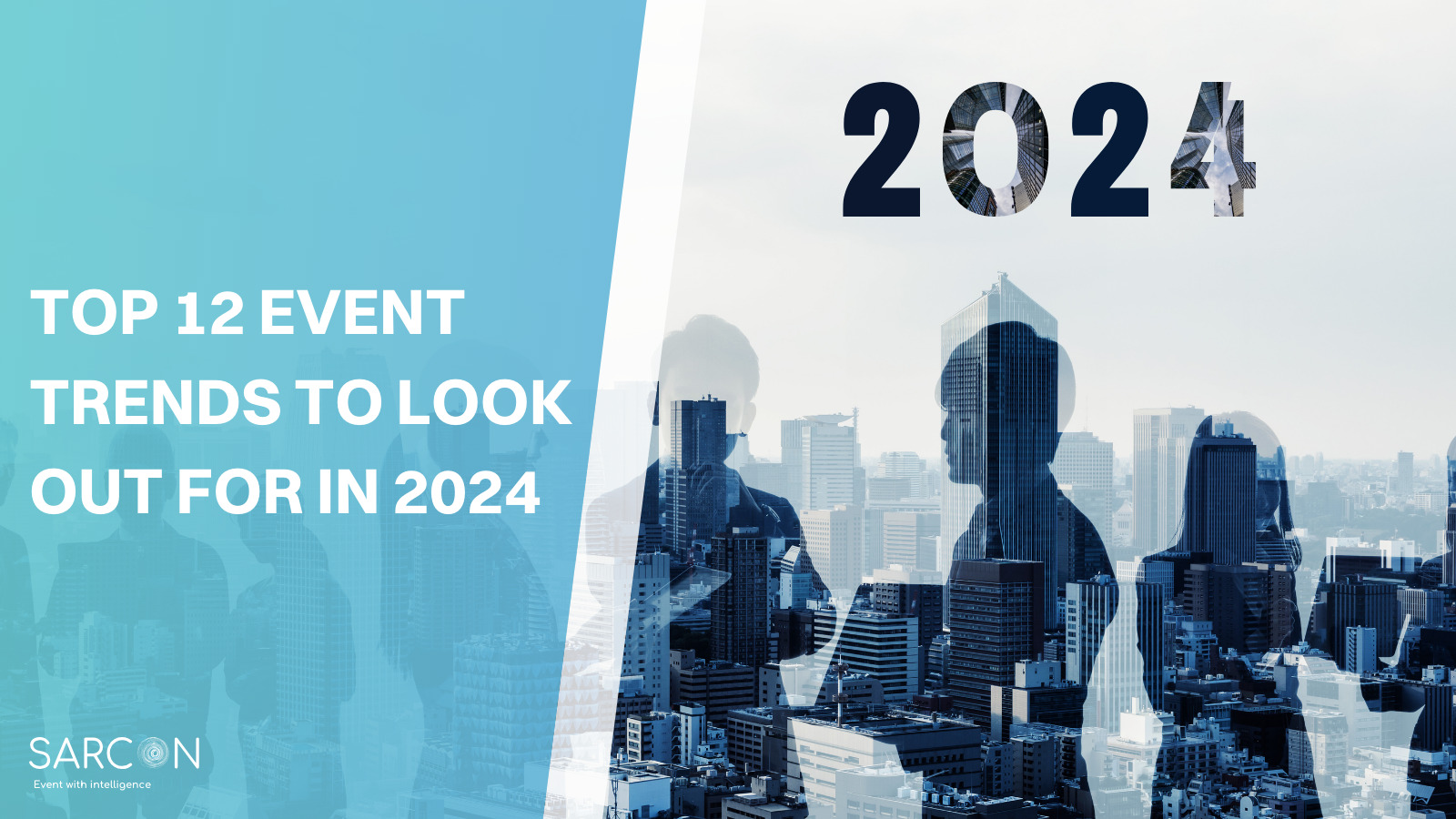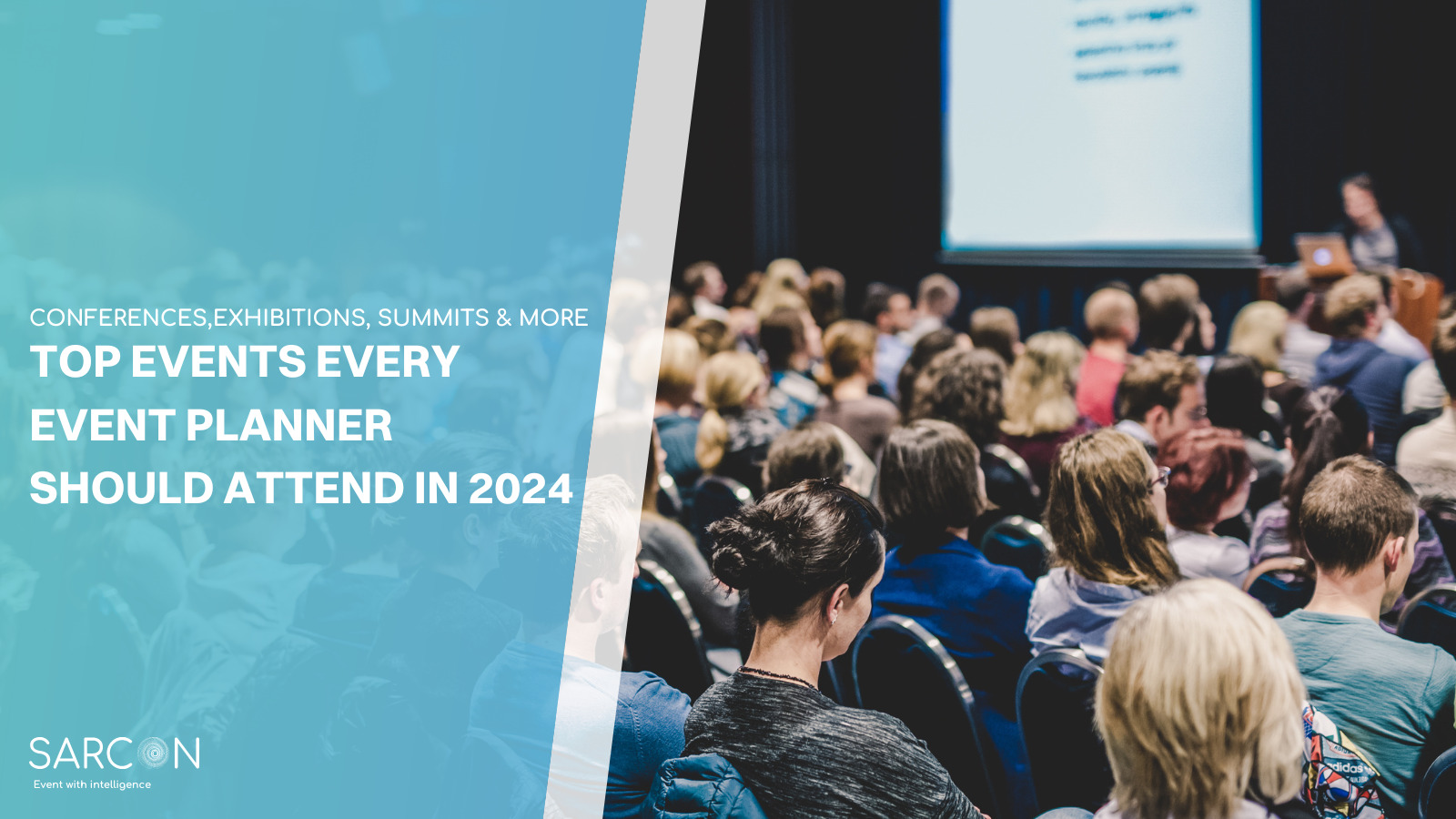As we usher in the year 2024, the landscape of event planning and management is poised for a remarkable transformation, driven by technological advancements, evolving attendee preferences, and an intensified commitment to sustainability. To navigate this dynamic terrain effectively, it’s essential to delve into the details of the top event trends that will shape the industry in 2024.
Top 12 Event Trends to Look Out for in 2024
Event Trend #1: More AI-Powered Events
The presence of Artificial Intelligence (AI) in event planning will be more pronounced than ever in 2024. One of the stars of this technological revolution is ChatGPT, an AI tool known for its ability to generate human-like text. The anticipation is high as event planners look forward to harnessing the potential of AI in their endeavors.
AI can assist event organizers in various critical aspects of planning, from brainstorming unique event themes to crafting engaging agendas and suggesting exciting activities like ice-breaking games. It can even help with event marketing by crafting compelling email invitations and aiding in the selection of speakers and venues. The result? A more streamlined and efficient event planning process.
But the role of AI doesn’t end with event preparation. During the event itself, AI tools can engage attendees in real-time. They can answer queries, provide comprehensive product information, and guide attendees through on-site demonstrations. This not only enhances the attendee experience but also offers cost-effective solutions to event management challenges.
For more information read: The Future of Event Management Software: AI, Automation, and Beyond
Event Trend #2: In-Person and Hybrid Events Will Continue To Grow
In 2024, in-person events are poised to maintain their dominance, building upon the momentum they gained in the preceding year. The resurgence of in-person gatherings is not merely a passing trend but a testament to the profound human desire for genuine connections and immersive experiences.
However, what makes this trend even more intriguing is the enduring relevance of virtual experiences. Rather than fading into obsolescence, virtual components are evolving to complement and extend the reach of in-person events. Hybrid events, which seamlessly integrate both physical and virtual elements, remain a substantial and meaningful part of the event landscape.
Event Trend #3: Niche and Micro-Events
2024 heralds a rising trend in smaller, more niche-focused events. Event organizers are recognizing the immense value of creating intimate gatherings tailored to specific interests. These micro-events are like hidden gems, offering attendees unique and deeply meaningful experiences.
Examples of niche events gaining traction in 2024 include book club gatherings, artisanal food tasting events, tech startup pitch nights, blockchain technology roundtables etc. These events foster a sense of community and provide attendees with a more targeted and authentic experience.
These trends represent a significant shift towards personalization and attendee-centric event planning.
Event Trend #4: Digital-First Approach
The digital revolution continues to influence event planning in 2024, even for in-person gatherings. Event planners are adopting a digital-first approach to enhance the overall event experience. Digital-first thinking involves several key elements:
- Mobile Apps: Provide attendees with a dedicated event app that offers features like event schedules, maps, speaker profiles, and real-time updates. These apps enable seamless navigation and access to event information.
- Contactless Check-Ins: Implement QR code-based check-ins to reduce physical contact and queues at registration counters. This not only enhances safety but also improves the overall efficiency of the event.
- Augmented Reality (AR) and Virtual Reality (VR): Incorporate AR and VR elements into in-person events to add a layer of interactivity and excitement. These technologies can be used for immersive experiences, interactive product demonstrations, or guided tours.
- Live Streaming and Social Media Integration: Ensure that key sessions and moments from the event are live-streamed for virtual attendees. Encourage real-time social media engagement through event-specific hashtags, creating buzz and extending the event’s reach.
Digital-first strategies streamline the event process, making it more efficient and convenient for both organizers and attendees. Online registration allows for seamless sign-ups, reducing the hassle of manual check-ins. Mobile event apps provide attendees with event information, schedules, and networking opportunities right at their fingertips. Digital networking tools facilitate connections among attendees, fostering meaningful interactions before, during, and after the event.
Event Trend #5: Embracing Sustainability in Events for 2024
This year, sustainability isn’t just a checkbox—it’s a compelling focal point that event enthusiasts eagerly anticipate. Event organizers are enthusiastically weaving eco-conscious practices into every facet of event planning and execution.
A prime example of this trend is the evolution of event badges and lanyards. In 2024, attendees can look forward to wearing badges crafted from recycled ocean plastics, proudly displaying their commitment to environmental conservation. Lanyards, too, have undergone a makeover, with event planners choosing reusable materials and innovative designs that can be ingeniously repurposed long after the event concludes.
Furthermore, there’s an inspiring push among event planners to host carbon-neutral events and dramatically reduce waste through responsible practices. Sustainability isn’t just a buzzword; it’s an integral part of event strategies, reflecting a collective determination to create a greener and more environmentally conscious event industry.Attendees can eagerly anticipate being part of this positive change and contributing to a more sustainable future through their event experiences.
Event Trend #6: Mix It Up With Different Event Formats: In-Person, Hybrid, and Virtual
The versatility of event formats is a key trend for 2024. Event planners should be prepared to organize events in various formats, including in-person, hybrid, and virtual. Each format serves distinct purposes and caters to different attendee preferences.
In-person events offer the richness of face-to-face interactions, while hybrid events combine physical and virtual elements, enabling organizers to reach a global audience. Virtual events provide accessibility and convenience, allowing attendees to participate from anywhere in the world. By offering a variety of event formats, organizers can maximize their reach and engagement, ensuring that each attendee has an experience tailored to their needs.
Event planners should carefully assess their target audience and event goals to determine the most suitable format.
Event Trend #7: Use One End-To-End Event Technology Solution
Event organizers are increasingly adopting end-to-end event technology solutions that centralize and streamline their processes. These comprehensive platforms encompass everything from event registration and ticketing to attendee engagement and post-event analytics.
By leveraging one end-to-end solution, organizers can create a cohesive and consistent attendee experience. Attendees benefit from a seamless journey, from registration to post-event engagement, while event organizers gain valuable insights into attendee behavior and event performance. This data-driven approach empowers organizers to make informed decisions and continuously improve future events.
Event Trend #8: Empower Attendees To Influence Event Content
In 2024, attendee participation will take center stage. Event planners will actively involve attendees in shaping event content and agendas. This participatory approach not only enhances engagement but also ensures that events align with the specific interests and needs of the audience.
Attendees are given opportunities to contribute ideas, suggest topics, and even co-create content. This collaborative approach fosters a sense of ownership and investment among attendees, resulting in more interactive and meaningful events. By empowering attendees to influence event content, organizers can create experiences that resonate deeply with their audience.
Event Trend #9: Don’t Overlook Pre- and Post-Event Engagement
Engagement isn’t limited to the duration of the event itself. In 2024, event organizers are placing significant emphasis on pre-event and post-event engagement. Digital platforms and communication channels are leveraged to maintain connections with attendees before and after the event, ensuring that the event’s impact extends beyond its physical or virtual boundaries.
Pre-event engagement builds anticipation and excitement, while post-event engagement allows for continued discussions, knowledge sharing, and relationship building. These efforts contribute to a more holistic and enduring attendee experience, reinforcing the value of the event.
Event Trend #10: Personalization of Events
Personalization has been the driving force in event planning for 2023, and 2024 will be no different. Organizers are tailoring event experiences and content to the individual preferences and interests of attendees. This level of customization extends to personalized agendas, recommendations, and networking opportunities, ensuring that each attendee’s experience is unique and meaningful.
By delivering personalized experiences, event organizers can increase attendee satisfaction and engagement. Attendees feel more connected to the event when it caters to their specific needs and interests, resulting in more memorable and impactful experiences.
For more information read : Event Personalization 101
Event Trend #11: Maximize the Impact of Your Event Content
In 2024, content remains a cornerstone of successful events. Event planners are focusing on delivering high-quality, relevant content that adds substantial value to attendees. This includes expert panels, interactive workshops, thought-provoking sessions, and immersive experiences that leave a lasting impact.
The emphasis is on curating content that aligns with the event’s goals and the needs of the audience. By providing valuable and meaningful content, event organizers can engage attendees on a deeper level, leaving a lasting impression and ensuring that the event’s objectives are met.
Event Trend #12: Unlocking the Power of Data
Data is a powerful asset in event planning, and in 2024. Event organizers are tapping into the wealth of data available before, during, and after events to gain profound insights into attendee behaviors, preferences, and engagement levels. This data-centric approach is not just about gathering information; it’s about analyzing and utilizing these insights to tailor events for maximum impact and success.
By leveraging advanced analytics, AI, and machine learning, organizers can predict trends, personalize experiences, and make informed decisions that resonate with their audience. From customizing content to optimizing logistics, every aspect of an event is enhanced through the intelligent use of data. This trend signifies a shift towards more responsive, attendee-focused events that not only meet but exceed expectations, setting a new standard in the event industry.
Conclusion
In conclusion, the event landscape in 2024 is marked by innovation, adaptability, and a commitment to sustainability. Event planners must embrace AI tools, diversify event formats, and prioritize attendee engagement and personalization to create memorable and impactful experiences. By utilizing end-to-end event technology solutions and focusing on data-driven decision-making, organizers can stay at the forefront of innovation and deliver events that resonate with a diverse and tech-savvy audience. In this dynamic environment, success lies in staying agile, responsive, and forward-thinking to emerging trends and attendee expectations.



